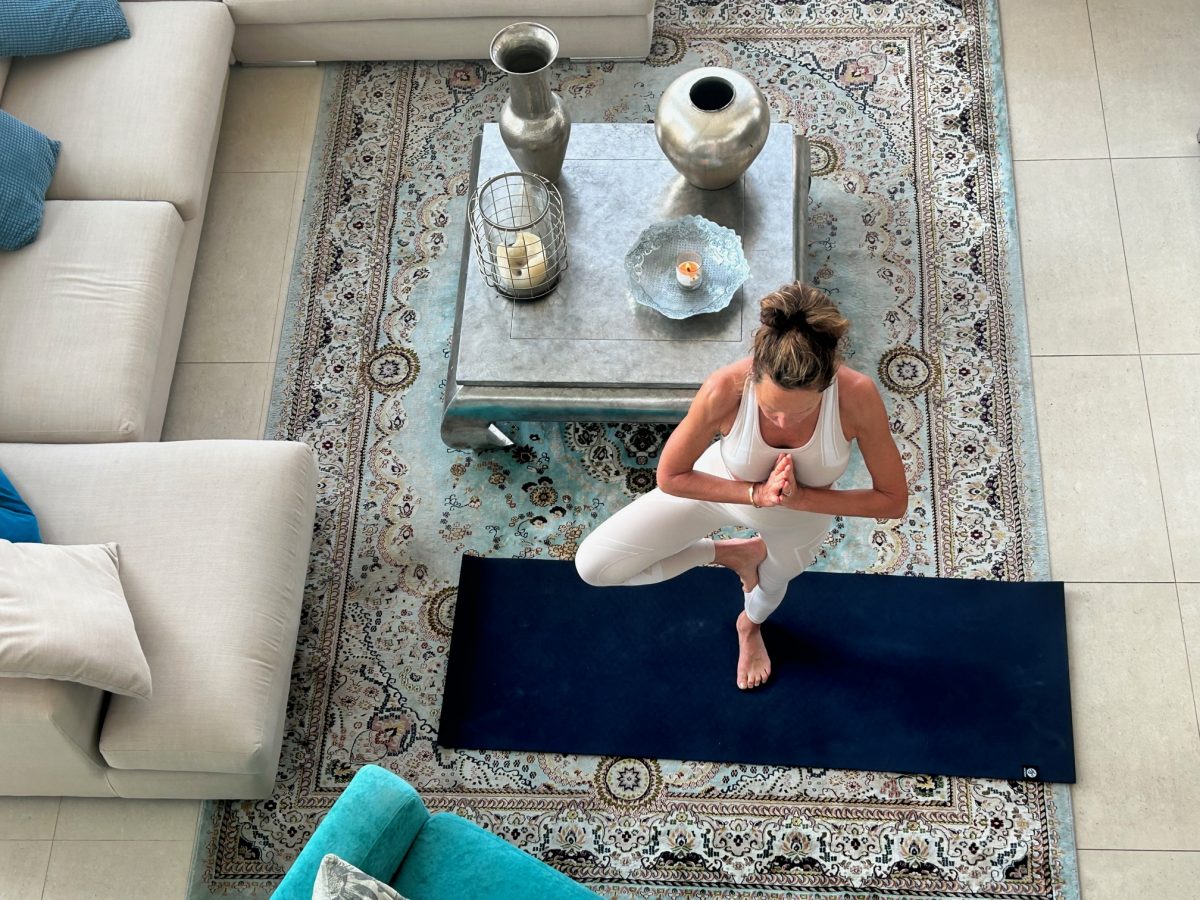Menopause is the process a woman goes through that causes her monthly periods to end. This is a normal part of the aging process for women, but its associated symptoms be challenging. Yogalates can assist this journey.
When we enter the season of menopause, hormonal changes cause our physical and emotional selves to change…. Sometimes this is associated with a lack of energy, mood swings, slower metabolism, weight gain and stiff and achy joints! These changes can be deeply distressing and effect self-esteem, wellbeing in many aspects of our lives practicing yoga and Pilates can be a powerful adjunct to easing these symptoms as we journey through menopause as it can nourish your mind and body.
Firstly, in order to understand the way yogalates can ease the physical and emotional changes and the associated symptoms of perimenopause and menopause we must understand a bit about the hormonal changes that take place during this time…
The hormone estrogen regulates the menstrual cycle (and its production decreases during perimenopause). Estrogen affects the reproductive system, urinary tract, heart, blood vessels, bones, muscles, skin and hair.
The 6 Mind and Body Benefits of Yogalates
Yogalates builds and maintains muscle.
Keeping your muscles active through yogalates helps promote the demands placed on your endocrine glands to produce Estrogen and other necessary hormones. By doing yogalates and building muscle mass we enable greater stimulation to produce hormones which help maintain our bodily functions.
The main cause of menopausal fatigue is the change in hormone levels. Oestrogen, progesterone, thyroid and adrenal hormones are all involved in regulating cellular energy in the body which when compromised can lead to fatigue. Physical menopausal symptoms like night sweats and insomnia contribute to fatigue.
Yogalates assists in strengthening bones and preventing osteoporosis.
Estrogen is essential to female bone health as it promotes the work of osteoblasts, which are cells that promote bone growth. When estrogen levels drop during menopause, the osteoblasts are less able to effectively produce bone. Because bone is a living tissue it adapts to the forces being put on it. Like the pull of muscle on the bones. The weight bearing exercises in yogalates and the action of muscles pulling on bone during the yogalates movements assist in maintaining healthy bone and preventing osteoporosis during menopause. Exercises such as birddog, plank, squats, salute to the sun are great for assisting muscle and Vit D bone health during menopause.
According to the Arthritis Foundation, women lose about half of their trabecular bone — the spongy tissue that fills your long bones and keeps them strong. Most of the loss happens within the first ten years after menopause, but both men and women lose 0.5 percent of bone density every year after age 50. Slowing this process is a great reason to regularly practice yogalates!
Yogalates reduces the risk of falls.
Another benefit yogalates is that it improves balance and coordination. This becomes especially important as we age because it helps to prevent falls and the broken bones that may occur. Poses and yogalates exercises such as tree pose, warrior poses, chair pose and single leg standing exercises all contribute to maintaining and building healthy muscle and bone during menopause
Yogalates assists with Muscle and joint pain.
Muscle and joint aches and stiffness is also common for many women during menopause. One of estrogen’s main roles in the body is to control and reduce inflammation. When estrogen production declines during menopause so does the benefits of its work as a natural anti-inflammatory agent. There are estrogen receptors all over our body, as well as in the joints. So, during menopause, declining hormone levels can add to pain caused by inflammation, general wear and tear from life and the process of aging. Therefore, women may start feeling arthritis-like aches and pains and stiffness during menopause. I frequently consult clients with this in my physiotherapy clinic and encourage yogalates exercise to release tightness and reduce muscle and joint pain. I explain to my patients and yogalates clients that the way to keep joints healthy and flexible is to move them. Often as we age our activity levels decline, our weight increase and joint stiffness sets in… a perpetuating cycle! It is never too late to begin practicing yogalates regularly to reverse this cycle.
Yogalates assists in maintaining and strengthening the pelvic floor before and after menopause.
The pelvic floor are the muscles that sit like a hammock from the pubic bone at the front, to the coccyx (tailbone) at the back and from one ischial tuberosity (sitting bone) across to the other (side to side). A female’s pelvic floor muscles support the bladder, bowel and uterus. One of the many changes a woman may notice during menopause is difficulty controlling her bladder or bowel. Often, symptoms of urinary frequency (constantly needing to go to the toilet) or urgency (needing to get to the toilet in a hurry or not making it there in time). These symptoms may increase the chance of developing a prolapse or begin leaking from your bladder or bowel. The subtle activation of pelvic floor muscles is an integral part of proper technique during the practice of yogalates
Yogalates enhances mood and reduces stress.
Fluctuating estrogen levels during menopause can cause serotonin (the feel-good hormone) production disruption, leading to more mood swings, anxiety and even depression. Pilates and yoga, the practice of yogalates, has been shown to lower stress hormones in our bodies while also increasing beneficial ‘feel good’ brain chemicals like endorphins and GABA (gamma-aminobutyric acid). These feel-good chemicals assist in decreasing anxiety and improve mood. The practice of Yogalates has a powerful combination of the physical movement combined with the deep breathing, meditation and mindfulness. The mindful movement and connection to breath in yogalates has been shown to reduce cortisol (the stress hormone) and relieve stress…
Yoga and Pilates can help the inner dialogue and mindset. Rather than listening to external stressors such as fatigue, pain, weight gain, you can use yogalates mind body awareness, to learn to tap into your habits, cravings, and listen to what your body needs.
Practicing yogalates during perimenopause and menopause is a journey toward improvement. It begins with accepting yourself and the changes as we journey through life— and then experiencing the physical, energetic and mental benefits that naturally follow. Even 10 minutes of yogalates a day can help improve mood, reduce stiffness and pain, maintain strong bone and muscle, a healthy weight as we journey through menopause.
See you on the mat,
Lisa x

